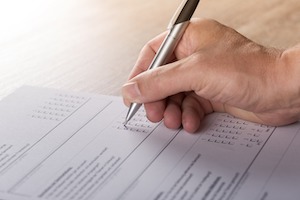The Gambling Commission has published the first wave of data for its Gambling Survey for Great Britain.

The initial wave of the survey found that overall participation in any gambling activity was 48 per cent, with 21 per cent saying they only took part in lottery draws. Gambling participation without solely lottery players was 27 per cent, the data said.
The online gambling participation rate in the last four weeks was 38 per cent, falling to 16 per cent without those who only played lottery. The in-person gambling rate was 29 per cent, dropping to 18 per cent without players who only played lottery.
The Gambling Survey for Great Britain is the UK regulator’s new data collection method on the industry as a whole.
The Wave 1 data, which was conducted by NatCen and surveyed a representative sample of 4,801 adults aged 18 and over between July and November 2022, largely follows the patterns found in the UKGC’s experimental data for its new methodology.
The Gambling Commission’s director of research and statistics, Ben Haden, said the regulator is now “confident” that it has an “independently recognised robust methodology that will help us to track trends in gambling behaviour in the years to come.”
He said the GSGB provides a “consistent and frequent way” of collecting data among adults and offers the ability to publish “regular data outputs in order to help us understand changes in gambling behaviour among the population and among sub-population groups.”
Nevertheless, leading academic Professor Patrick Sturgis of the London School of Economics recently gave the Gambling Commission seven recommendations to improve its survey.
The Gambling Commission will publish “wave-specific data” four times a year, Haden said in a blog post, based on around 5,000 responses in each wave.
The regulator will then publish an annual report in July.
“This will provide a much bigger sample size so we can start to analyse behaviours amongst specific sub population groups or specific activities. In this annual publication, unlike the quarterly wave data we publish, we will also report on the impact that gambling has on gamblers and by that we mean both the positive and negative consequences of gambling,” Haden said.
The first wave of the GSGB also found that following lotteries, the next three most popular activities were scratchcards (13 per cent), betting (10 per cent) and instant wins (seven per cent.)